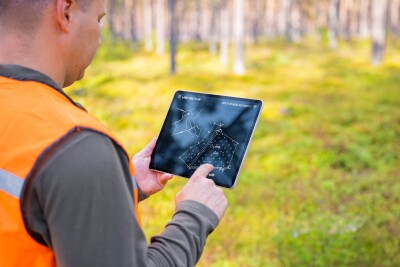What drives the adoption of new technology above all else? Is it utility or performance or some hard-to-quantify cool factor? Nope. It’s money. I know – what a profound realization on my part. But this provides an interesting way to look at the newly popular archaeological applications of airborne lidar.
In the last couple of months, we’ve had a few stories bubble up to the mainstream surface. First was work Colorado State performed at Sacapu Angamuco, in Mexico, picking out 3,800 archaeological features in eight weeks. Next we heard about Emmy-winner Steve Elkins (he was behind a lot of the Crocodile Hunter stuff) and his lead on the project that scanned a portion of Honduras looking for the lost city of Ciudad Blanca (that link is the press release that started it all). And today I came across this article about a couple of U of Central Florida researchers using lidar to expand their knowledge of the ancient city of Caracol (now in Belize).
First, let’s look at the common denominators so we can set what’s getting to be a pretty obvious benefit supplied by airborne lidar:
Sacapu Angamuco:
Last year, LiDAR enabled Fisher to create a full-fledged picture of the important Mesoamerican capital in greater detail. This included the discovery of several pyramids, ceremonial complexes and thousands of residences and other buildings that no one knew existed in the city.
Ciudad Blanca:
Initial analysis of the LiDAR data indicates what appears to be evidence of archaeological ruins in an area long rumored to contain the legendary lost city of Ciudad Blanca.
Caracol:
The laser images also uncovered tens of thousands of agricultural terraces the Mayans had built to feed the inhabitants of their sprawling city, 11 previously unknown causeways and numerous hidden buildings and structures obscured by dense tropical overgrowth.
Quite literally, lidar is finding archaeologically significant things that no one (well no one currently alive and in communication with the outside world, anyway) even knew existed. Completely lost buildings, pyramids – whole cities!
Think of the value of those discoveries. For the archaeologists, there is, of course, the addition to the overall knowledge-base, which is of course important. But there’s also the value of the grants they’ll be able to collect, the increased government funding maybe, because of the discoveries they’ve made. And for a guy like Elkins, who I’m genuinely sure has altruistic intents as well, there is the revenue he stands to make from his media releases (his UTL Productions now owns all the rights to media use of the data collected at Ciudad Blanca).
If lidar is seen as a path to increased monetization for those already in the archaeology field, that’s a good driver for the industry, even if no thinks there’s any money in the historic preservation lidar market.
Taking this line of thought further, though, what’s to stop treasure hunters – like the Diamond Divers, maybe – from rigging up lidar systems and searching out their own lost pyramids and temples and what not? Is there a vast undiscovered trove of rare artifacts lurking in the previously just-about-impossible-to-navigate reaches of the Central and South American rain forest? It’s kind of likely, right?
Could we see a small run on airborne systems from private companies looking to capitalize on a new way to find hidden treasure (both actual and metaphorical)? It doesn’t sound impossible to me… There’s gold in them thar forests!
Perhaps it’s crass of me to consider the possibility, but I doubt my mind is closest to the greedy gutter.





